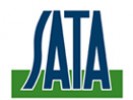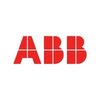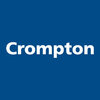Filter interviews by
Jay Switches Production Interview Questions and Answers
Jay Switches Production Interview Experiences
1 interview found

(1 Question)
- Q1. What was your salary
(1 Question)
- Q1. Define cpk and mpc
- Ans.
Cpk is a measure of process capability, while MPC stands for Manufacturing Process Control.
Cpk is used to assess how well a process is performing within specification limits.
It measures the potential for a process to produce defects.
MPC refers to the methods and techniques used to monitor and control manufacturing processes.
It involves collecting data, analyzing it, and taking corrective actions to ensure quality.
Both ...
Top trending discussions






Interview questions from similar companies

Production Interview Questions & Answers
Interface Microsystemsposted on 27 Oct 2023
I applied via Campus Placement and was interviewed in Apr 2023. There were 4 interview rounds.

(2 Questions)
- Q1. What is diaode . And uses
- Ans.
A diode is a semiconductor device that allows current to flow in one direction only.
Diodes are commonly used in rectifiers to convert AC to DC power.
They are also used in signal processing, voltage regulation, and protection circuits.
Examples include light-emitting diodes (LEDs) and photodiodes.
Diodes can be used in logic gates and digital circuits for switching and signal processing.
- Q2. What is ldr and use
- Ans.
LDR stands for Light Dependent Resistor. It is a type of resistor that changes its resistance based on the amount of light it is exposed to.
LDRs are commonly used in light sensing applications, such as automatic street lights or camera exposure control.
The resistance of an LDR decreases as the intensity of light increases.
LDRs are often used in combination with other components like transistors or microcontrollers to c
(2 Questions)
- Q1. About yourself and your city
- Q2. Your choice and shift
(1 Question)
- Q1. Draw a diagram of half wave rectifier
- Ans.
A half wave rectifier is a circuit that converts AC voltage to pulsating DC voltage by allowing only one half of the input waveform to pass through.
The input AC voltage is applied to a diode which only allows current to flow in one direction.
During the positive half cycle of the input waveform, the diode conducts and allows current to flow through the load.
During the negative half cycle, the diode blocks current flow, ...
Interview Preparation Tips


(1 Question)
- Q1. About Subject knowledge
Interview Preparation Tips
Dont know then should clear say no

An aptitude test is designed to assess an individual's ability to perform certain tasks or react to a range of different situations. These tests are often used by educational institutions and employers to evaluate potential candidates' skills, talents, and potential for success in a specific role or academic program. Here are some key details about aptitude tests:
1. **Purpose**: Aptitude tests are used to measure a variety of skills, including logical reasoning, verbal ability, numerical skills, and spatial awareness. They help to identify strengths and weaknesses and predict future performance.
2. **Types**:
- **Verbal Reasoning**: Assesses understanding and reasoning using concepts framed in words.
- **Numerical Reasoning**: Tests ability to work with numbers, including basic arithmetic, data interpretation, and logical problem-solving.
- **Abstract Reasoning**: Evaluates the ability to identify patterns, logical rules, and trends in new data.
- **Mechanical Reasoning**: Measures understanding of mechanical and physical principles.
- **Spatial Reasoning**: Assesses the ability to visualize and manipulate objects.
3. **Format**: Aptitude tests can be multiple-choice, true/false, or involve practical problem-solving tasks. They are often timed, with specific sections dedicated to each type of reasoning.
4. **Preparation**:
- **Practice Tests**: Taking practice tests helps familiarize with the format and types of questions.
- **Study Guides**: Reviewing basic concepts in mathematics, grammar, and logical reasoning.
- **Skills Development**: Enhancing skills through puzzles, reading, and other related activities.
5. **Usage**:
- **Recruitment**: Employers use aptitude tests to screen job applicants and find the best fit for a role.
- **Education**: Schools and colleges use these tests for admissions, placement, and identifying areas for student improvement.
- **Career Counseling**: Helps individuals understand their strengths and areas for improvement, guiding career choices.
6. **Scoring**: Scores are typically presented as percentiles, showing how a test-taker compares to a norm group. Higher scores indicate better performance relative to the norm group.
If you have specific questions about a certain type of aptitude test or need preparation tips, feel free to ask!
(2 Questions)
- Q1. Tell me about yourself.Tip: Provide a brief overview of your professional background, focusing on experiences relevant to the job you're applying for. Highlight your key achievements and skills.
- Q2. Know YourselfAssess and interest.
Interview Preparation Tips

Production Engineer Interview Questions & Answers
SKH Groupposted on 6 Dec 2024
I applied via Referral and was interviewed in Jun 2024. There were 3 interview rounds.
(2 Questions)
- Q1. Process knowledge
- Q2. Technical knowledge
(2 Questions)
- Q1. How are you opposed for attrition of employees
- Ans.
I am opposed to attrition of employees by implementing retention strategies and creating a positive work environment.
Implementing competitive salaries and benefits to attract and retain top talent
Providing opportunities for career growth and development to increase employee engagement
Creating a positive work culture with open communication and recognition programs
Conducting regular feedback sessions to address any issu
- Q2. What is your skills in team building and leadership
- Ans.
I have strong skills in team building and leadership, demonstrated through my ability to motivate and guide team members towards common goals.
I have experience in leading cross-functional teams to successfully complete projects on time and within budget
I am skilled in conflict resolution and fostering a positive team dynamic
I have a proven track record of mentoring team members and helping them develop their skills and
What about work environment
Interview Preparation Tips
- TPM Activities
- Kaizen Implementation

Production Engineer Interview Questions & Answers
Seoyon E-hwa Automotiveposted on 26 Oct 2024
I applied via Approached by Company and was interviewed in Sep 2024. There was 1 interview round.
(1 Question)
- Q1. Machine related questions Ans Injections moulding horizontal type machine handle

Production Engineer Interview Questions & Answers
Caparo Engineering Indiaposted on 3 May 2024
I applied via Recruitment Consulltant and was interviewed in Nov 2023. There was 1 interview round.
(2 Questions)
- Q1. Tell me about yourself.
- Q2. What is gemba, power press, type of tool in power press, stamping process
- Ans.
Gemba is a Japanese term for 'the real place', power press is a machine used for stamping metal, tools used in power press include dies and punches, stamping process involves shaping metal by pressing it between dies.
Gemba is a Japanese term meaning 'the real place' or 'the actual place where work is done'
Power press is a machine used in metalworking to shape or cut metal using dies and punches
Tools used in power press...

Production Supervisor Interview Questions & Answers
Maxxis Rubberposted on 19 Oct 2023

(3 Questions)
- Q1. What is the 7QC ?
- Ans.
7QC stands for Seven Quality Control Tools, which are a set of techniques used for quality improvement in production processes.
The 7QC include tools such as Pareto charts, cause-and-effect diagrams, scatter diagrams, control charts, histograms, check sheets, and flowcharts.
These tools help identify and solve quality-related issues in production processes.
For example, a Pareto chart can help prioritize the most signific...
- Q2. What is the TPM?
- Ans.
TPM stands for Total Productive Maintenance, a proactive approach to maintenance that aims to maximize equipment effectiveness.
TPM involves empowering operators to take ownership of equipment maintenance
Focuses on preventing breakdowns and improving overall equipment efficiency
Incorporates principles such as autonomous maintenance, planned maintenance, and continuous improvement
Example: Implementing daily equipment che...
- Q3. What is the TPM target?
- Ans.
TPM target stands for Total Productive Maintenance target, which is a goal set to maximize the efficiency and effectiveness of production equipment.
TPM target is a goal set to minimize equipment downtime and maximize productivity.
It involves proactive maintenance practices to prevent breakdowns and improve overall equipment effectiveness.
Examples of TPM targets include reducing unplanned downtime by 20% or increasing e...

Production Engineer Interview Questions & Answers
JRG Automotive indiaposted on 11 Apr 2024
(1 Question)
- Q1. Prodcution plan

I applied via Recruitment Consulltant and was interviewed in Nov 2022. There were 3 interview rounds.

(1 Question)
- Q1. Resume generic questions
(1 Question)
- Q1. Asked about machine work and hands on work
Interview Preparation Tips
Jay Switches Interview FAQs
Tell us how to improve this page.
Jay Switches Interviews By Designations
Interview Questions for Popular Designations
- Production Engineer Interview Questions
- Production Supervisor Interview Questions
- Production Manager Interview Questions
- Production Officer Interview Questions
- Executive Production Interview Questions
- Senior Production Engineer Interview Questions
- Production Chemist Interview Questions
- Production Operator Interview Questions
- Show more
Interview Questions from Similar Companies
|
Quality Engineer
27
salaries
| ₹2 L/yr - ₹4 L/yr |
|
Production Engineer
21
salaries
| ₹2 L/yr - ₹4.5 L/yr |
|
Executive Accountant
7
salaries
| ₹1.5 L/yr - ₹3.5 L/yr |
|
Senior Quality Engineer
7
salaries
| ₹2.7 L/yr - ₹6.6 L/yr |
|
QA Engineer
6
salaries
| ₹2 L/yr - ₹2.8 L/yr |

Schneider Electric

Legrand

Havells

Panasonic Life Solutions India
Calculate your in-hand salary
- Home >
- Interviews >
- Jay Switches Interview Questions >
- Jay Switches Production Interview Questions





